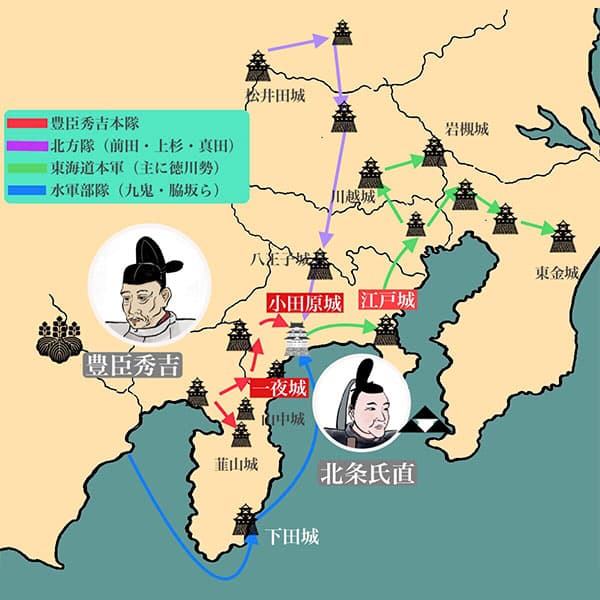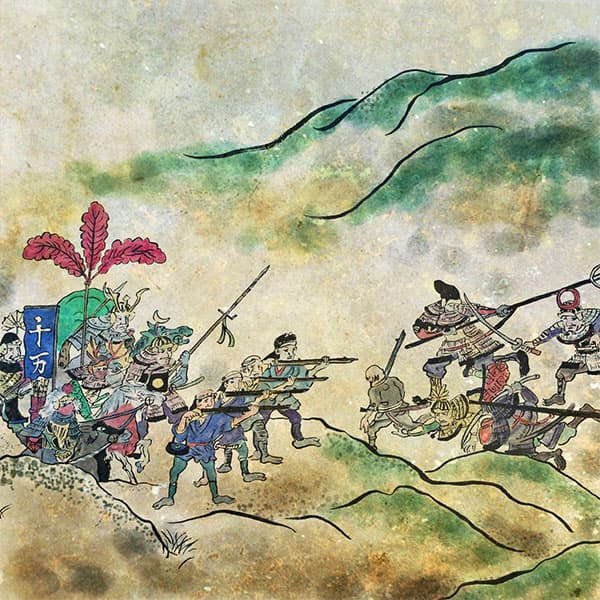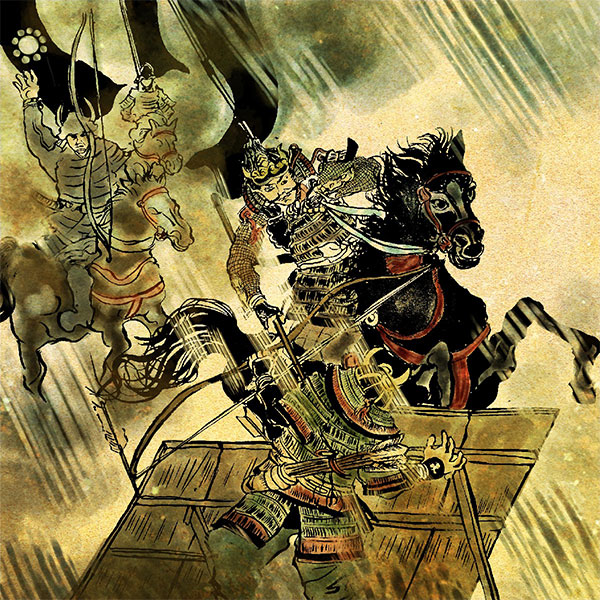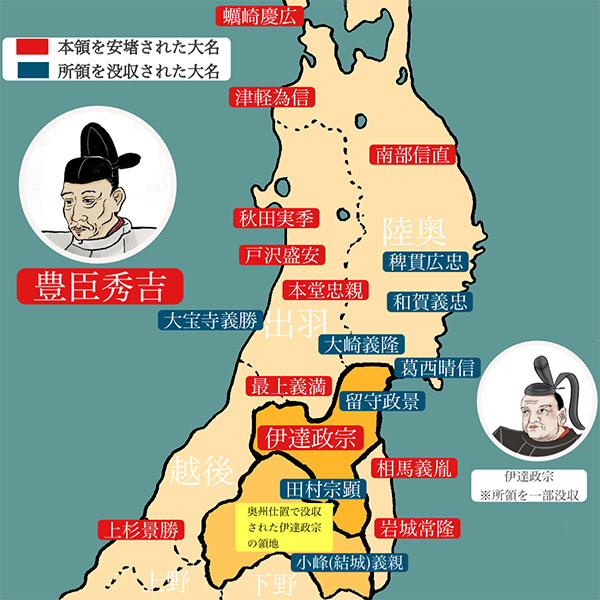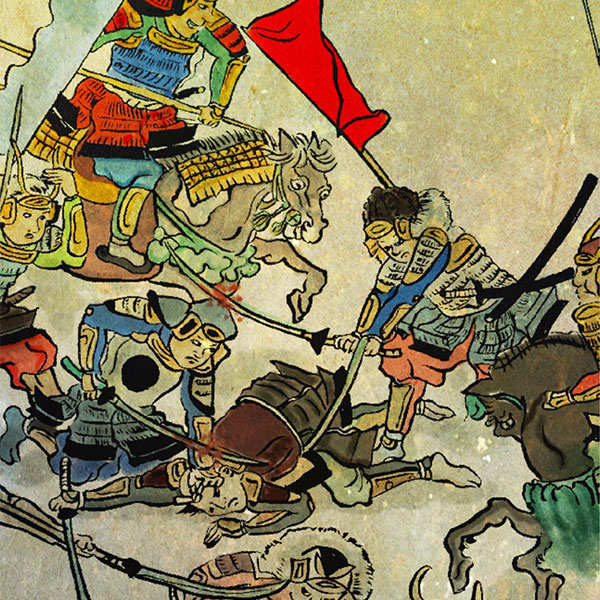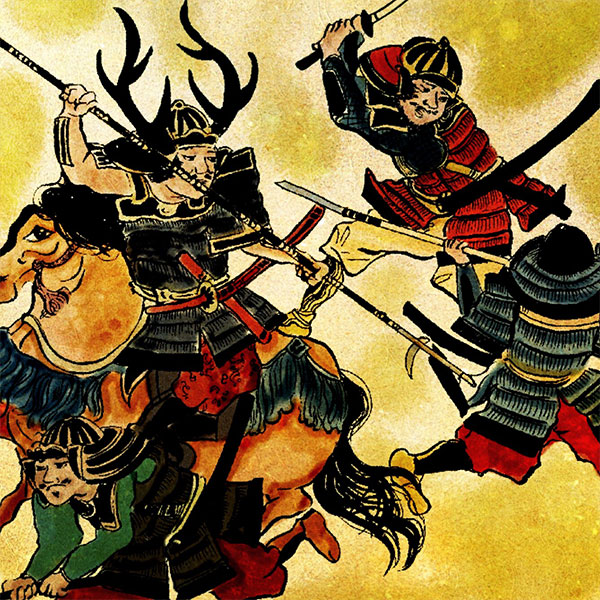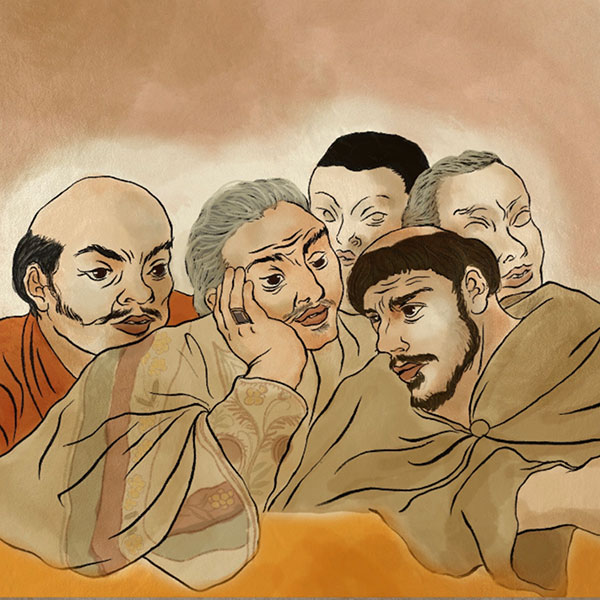Date Masamune (1/2)The essence of Oshu, burning with ambition to conquer the world
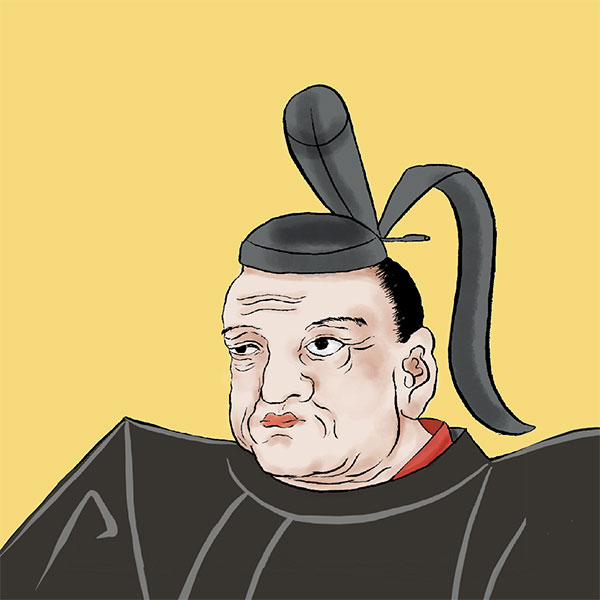
Date Masamune
- Article category
- biography
- name
- Date Masamune (1567-1636)
- place of birth
- Yamagata Prefecture
- Related castles, temples and shrines

Sendai Castle

Wakudani Castle

Yonezawa Castle
- related incident
During the Sengoku period, when many military commanders appeared and disappeared like bright stars, there was a military commander who stood out in Oshu. Date Masamune, who ran through the Sengoku period and the early Edo period, was a man who always had his sights set on conquering the world. A fashionable man with a penchant for show, which is the origin of the name Date Otoko, he also excelled at performing arts such as the tea ceremony and Nohgaku, and was also known as a deputy shogun who was highly appointed by successive shoguns, including Tokugawa Ieyasu. This time, we will introduce the life of Date Masamune.
Genpuku from Date Masamune's childhood
Date Masamune was born on August 3, 1567, at Yonezawa Castle in Dewa Province, as the eldest son of Date Terumune, the 16th head of the Date clan, to his legal wife Yoshimori Mogami, the eldest daughter of Yoshimori. He was born with Princess (Yoshimitsu Mogami's younger sister). His childhood name was Bontenmaru.
On November 15, 1577, he celebrated his Genpuku and began to call himself Date Tojiro Masamune. The name ``Masamune'' was given by his father, Terumune, after the 9th head of the family, Daizen Daibu Masamune, who was the founder of the Date family. Bontenmaru firmly refused this title, but his father, Terumune, forced him to adopt the name.
In October 1579, Kiyoaki Tamura, the lord of Miharu Castle in the southern Tohoku region and a descendant of the first Seii Taishogun Sakanoue Tamuramaro, came up with the idea that he wanted to marry his daughter to Masamune.
His father, Terumune Date, agreed to this, and at the age of 13, Masamune welcomed Aihime, then 12 years old, the daughter of Kiyoaki Tamura (who, like Masamune Date, had Tanemune Date as her great-grandfather) as his legal wife.
In early May of the 9th year of Tensho (1581), Masamune and his father Terumune went to battle against the Soma clan, a feudal lord in the neighboring Sengoku period, in Igu District, making their first battle. After this, Masamune became in charge of diplomacy with the Tamura clan and the Ashina clan as an agent of his father Terumune.
Family succession and the Battle of Suriuehara
In October 1584, his father Terumune retired and took over as head of the family.
Later, in April 1586, Masamune himself ran for office and besieged Nihonmatsu Castle. The Hatakeyama clan desperately resisted with the head of the family, Oumaru, but after a peace agreement was reached between the Date clan and the Ashina clan through the mediation of Soma Yoshitane, Oumaru surrendered Nihonmatsu Castle and moved to the Ashina clan in Aizu. I will send you
Masamune negotiated peace with the Satake clan and other feudal lords of southern Oshu, and for a time peace was restored.
However, in November of the same year, Kamewakamaru, who had taken refuge with the Ashina clan, suddenly died at the age of only three. Yoshishige Satake endorsed his son Yoshihiro as the head of the Ashina clan. However, Yoshishige had obtained the consent of the Yuki Shirakawa clan, the Iwaki clan, and others to support Yoshihiro in advance, and Masamune, who was thought to support his younger brother Kojiro, was not contacted in advance. Taking this opportunity, Masamune became conscious of a full-scale confrontation with the Satake clan.
In December 1587, Toyotomi Hideyoshi, the Kanpaku who became the ruler of Japan, issued a sou no edict (prohibition of private warfare) to the daimyo in Kanto and Ou, but Masamune ignored Hideyoshi's orders.
In February 1588, Masamune intervened in an internal conflict within the Osaki Ujiie clan in the north and started a war, but the unscrupulous battle continued. However, on the Southern Front, Date Tatsumi's mediation with Sadatsuna Ouchi was successful, and on the Northern Front, in May, a truce was reached with the Mogami clan after his mother, Yoshihime, intervened.
In July of the same year, a peace agreement was reached with the Mogami clan and the Ashina clan, and the situation was overcome. He secured the Tamura clan territory, the family home of Aihime, who was his legal wife. In September, he expressed his obedience to Toyotomi Hideyoshi through Kanayama Soarai.
In February 1589, Masamune fell from a horse and broke his left leg. Taking advantage of this opportunity, Tsunetaka Iwaki invaded Tamura territory in April, and Yoshitane Soma also responded.
Masamune recovered and went to war in May, but when he learned that Chikatsuna Katahira (younger brother of Sadatsuna Ouchi) from Ashinakata had surrendered to Masamune, he made a complete change and headed for Aizu.
In June, he fought with Yoshihiro Ashina of Aizu and defeated him at Suriuehara at the foot of Mt. Bandai (Battle of Suriuehara).
Hideyoshi informed Masamune, who had violated the Kyojun and Soan Rei, that if he did not withdraw from Aizu, he would dispatch troops to Ou.
Submitted to Toyotomi Hideyoshi at the Battle of Odawara
In November 1589, the Hojo clan invaded Sanada territory, and Toyotomi Hideyoshi decided to conquer Odawara. Date Masamune had been in an alliance with the Hojo clan since his father Terumune's time, and it is said that he was unsure whether to fight against Hideyoshi or march into Odawara until just before his death.
In May 1590, during Hideyoshi's conquest of Odawara, he was urged by Asano Nagamasa, a subordinate of Toyotomi, to march into Odawara. Masamune departed from Aizu on May 9, passing through Yonezawa and the territories of his ally Kagekatsu Uesugi, Echigo, Shinano, and Kai, before arriving at Odawara.
Masamune submitted to Hideyoshi in consideration of the troops mobilized by Hideyoshi, and Hideyoshi confiscated the Aizu territory, but relieved the Date family of 720,000 koku (roughly the territory at the time of inheritance).
At this time, Maeda Toshiie and others came to question the latecomer, and he said, ``I would like to receive tea instruction from Sen Rikyu,'' which impressed Hideyoshi and others. It is said that this behavior was based on Hideyoshi's flamboyant personality.
Shortly after Masamune submitted to Hideyoshi, Hojo Ujimasa and Ujinao's father and son surrendered to Hideyoshi, and Hideyoshi conducted Oshu Shioki (Utsunomiya Shioki) at Utsunomiya Castle, and Hideyoshi's unification of Japan was achieved.
From the Battle of Sekigahara to the establishment of the Sendai domain
After Toyotomi Hideyoshi died, in 1600, Tokugawa Ieyasu sent an army to subjugate Uesugi Kagekatsu in Aizu. Masamune followed Ieyasu and on July 25th, he recaptured Shiroishi Castle, which was guarded by Katsuno Tosaka. While Ieyasu left the Kinai region, Mitsunari Ishida, the five magistrates who were anti-Ieyasu, raised an army with Terumoto Mori, the five chief elders, as their commander-in-chief.
Ieyasu, who had gone north to Oyama, Shimotsuke Province (present-day Tochigi Prefecture), had to turn back. In September of the same year, the Battle of Sekigahara occurred. When soldiers led by Kanetsugu Naoe, a senior vassal of the Uesugi clan in the Western Army, invaded the territory of the Mogami clan in the Eastern Army (Keicho Dewa Battle), Masamune, who belonged to the Eastern Army, dispatched troops at the request of the Mogami clan. .
The Battle of Sekigahara was a victory for Tokugawa Ieyasu of the Eastern Army, but Masamune's desired reward was not granted and his territory amounted to 600,000 koku (later, 20,000 koku was added to the enclaves in Omi Province and Hitachi Province). 620,000 koku.
After the Battle of Sekigahara, with permission from Tokugawa Ieyasu, he moved his residence to Sendai in 1601 and began construction of a castle and castle town. Sendai Castle was a mountain castle that took advantage of the natural topography, and the castle town of Sendai was developed from scratch, so it is said to have been a major construction project that mobilized a total of 1 million people.
Masamune planned trade between the Sendai domain and España (Pacific trade), and in 1613 he built a ship within Sendai territory. With Ieyasu's approval, Masamune dispatched Hasekura Tsunenaga and others to Mexico, Spain, and Rome (the Keicho Mission to Europe).
From 1603 onwards, he had many relationships with retainers of the Edo shogunate, and was troubled by various gifts and was absorbed in drinking parties, singing parties, tea parties, and Noh shows.
Masamune's end
Masamune took part in the Osaka Winter Siege in 1614 and the Osaka Summer Siege in the following year, 1615. In the summer camp, he fights against Motoji Goto and others at the Battle of Domyoji.
- related incident

- WriterTomoyo Hazuki(Writer)I have loved history and geography since my student days, and have enjoyed visiting historical sites, temples and shrines, and researching ancient documents. He is especially strong in medieval Japanese history and European history in world history, and has read a wide range of things, including primary sources and historical entertainment novels. There are so many favorite military commanders and castles that I can't name them, but I especially like Hisashi Matsunaga and Mitsuhide Akechi, and when it comes to castles, I like Hikone Castle and Fushimi Castle. Once you start talking about the lives of warlords and the history of castles, there's a side of you that can't stop talking about them.




